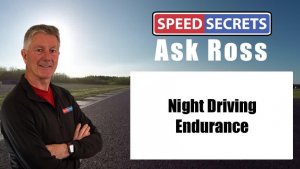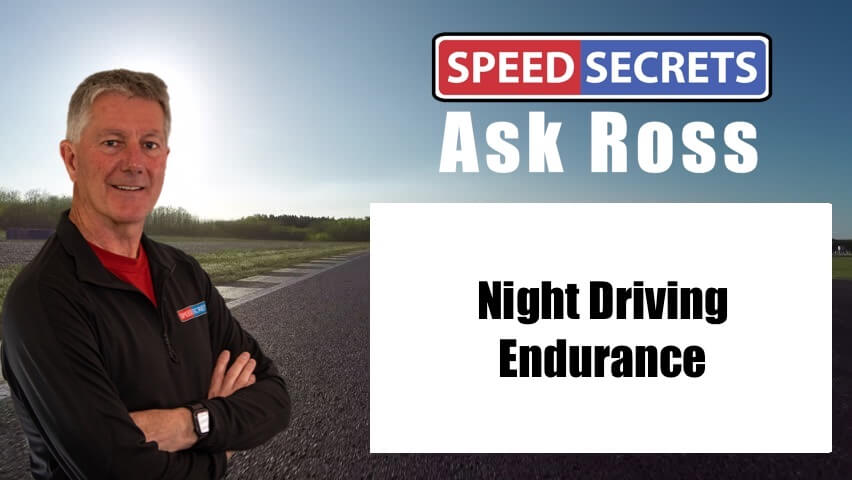 Q: “How can I improve my night driving? I had my first endurance racing at Spa last year, and I struggled in the traffic. Especially, it was very difficult to see the position and distance of other cars in the mirrors.”
Q: “How can I improve my night driving? I had my first endurance racing at Spa last year, and I struggled in the traffic. Especially, it was very difficult to see the position and distance of other cars in the mirrors.”
A: I know all too well how difficult racing at night can be, especially with the lights of other cars shinning in my mirrors. Here are a few things I’d suggest for your next night stint.
First, before you ever get to the night, gather all the references you can during the daylight. Typically, we have just one reference for where we begin braking, turn into corners, etc. But if you have multiple references for the same thing, such as the turn-in point, it makes it easier to find them when visibility is not so good. Take part of a practice session during the day to solely focus on collecting and storing in your mind more references (note them on a track map immediately after the session, too).
Before getting into the car for a night stint, avoid looking directly into bright lights, as this can dilate your pupils and make it harder to focus in the dark. Some drivers wear sunglasses right up until they get in the car to help their eyes adjust to the darkness.
Speaking of glasses, some drivers have found that wearing very weak glasses or contacts help. I’m talking about drivers who don’t normally wear glasses, but do only when driving at night. For sure, do not do this without consulting an optometrist, but you might find it really helps.
The more you can mentally picture the track, the easier it will be, so visualize driving the track in your mind, focusing on the details of what you see, feel, and hear. Think of it as having to walk through your house in the pitch black; you’d be able to do that because you have the layout memorized through repeated movement through it. The better you can picture the track in your mind, the better it’ll be when visibility is reduced.
Make sure your mirrors are properly adjusted to give you the best possible view without also being blinded by other lights. This may mean actually tipping the side mirrors further out to the side so headlights of cars behind you don’t shine directly into your eyes. This can help you better gauge the position and distance of other cars on the track, too.
Obviously, the better your headlights are and are aimed, the better. You may or may not be able to do anything about that, but keep it in mind.
Night driving can be challenging, but try to stay relaxed and focused on the task at hand. Trust your instincts and your knowledge of the track, and remember that other drivers are facing the same challenges.

